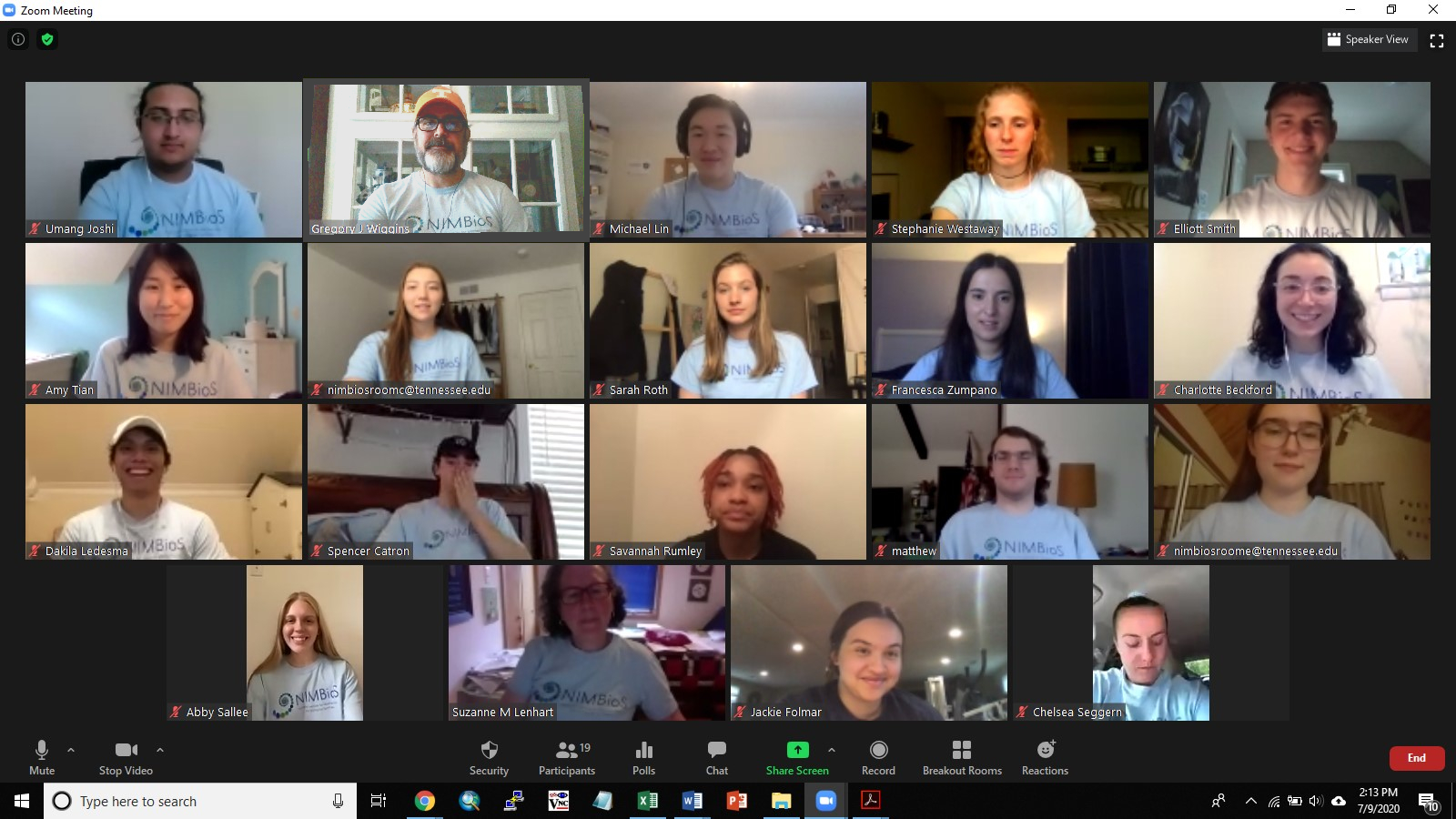NIMBioS Webinar: REUs in the time of COVID-19

NIMBioS hosted a Zoom webinar and panel discussion in cooperation with MAA SIGMAA on Undergraduate Research. The panelists discussed their experiences with research activities with undergraduate students in recent months during the COVID-19 outbreak. The challenges and best practices of these virtual activities were discussed.
Topic: REUs in the time of COVID-19
Date: Tuesday, December 8, 3:30-4:30 p.m. EST
Moderator: Suzanne Lenhart, Mathematics, University of Tennessee, Knoxville
Panelists
- Felice Manganiellio, Mathematical and Statistical Sciences, Clemson University.
- Yunus Zeytuncu, Mathematics and Statistics, University of Michigan-Dearborn
- Fernando Piñero Gonzalez, Mathematics, University of Puerto Rico in Ponce
- Hong Qin, Engineering & Computer Science and Biology, University of Tennessee, Chattanooga
NIMBioS hosted a Q&A via Zoom. Participants were able to submit comments and questions throughout the discussion.
Some questions posed by webinar participants (pdf)
- General question: How did you keep in touch with the students while virtual? How many interactions per day/week?
- What lessons do you have based on experiences of having REU's at distance on how to foster effective collaborations between the student participants?
- Yunus, were the tablets purchased for the program, if so, where did the money come from?
- Roughly how many hours per week did you have students on zoom in synchronous meetings/gatherings?
- Did you use enhanced collaborative boards like MIRO/JAMBOARD/TRELLO.
- Yunus, also what specifically were the tablets used for?
- What is your decision tree and timeline in determining whether the program will be in-person versus remote?
- Did you use Discord or Slack for team chat communication?
- Were there any strategies for building student community that you found were effective?
- Have any asynchronous modules been used for training?
- Are those Github sites publicly accessible?
- Were there any issues with commercial software use under the University licenses structure for remote SRE students.
- How do the online coffee breaks work?
- Did you need any additional personnel (i.e. grad student, peer) to support your students in the online setting, either to support their research and/or build community?
- Are all student presentations recorded?
- For those of you who shortened your program (e.g. 6 weeks), did you also reduce the stipend students were paid?
- https://gather.town/ has been mentioned often lately. NIMBioS has used SOCOCO. What other virtual interactive platforms have people considered/used?
- What technological tools did you use to facilitate collaboration? e.g., Microsoft Teams, Overleaf.
- What prior background are you expecting from us in the application?
- May you share how you recruit students? What students did you recruit?
- I have been actively encouraging my students to work on cultivating those relationships for these letters. I think this is going to be a huge issue.
- Is there a platform or approach for sharing workshop/course materials that didn't work that you would suggest we avoid?
- What about community college students? What, if any, is your commitment to include them?
- Can you comment on how you evaluate student applications, being sensitive to those who may have had less mentoring vs. those who have had more?
- Can we get a PDF with information with all the REUs represented?
- What was the name of the online modules that Hong mentioned?
- What institutional support or infrastructure was most helpful or lacking in implementing a successful REU program.
- Thank you all for your helpful advice! It was great to hear about your REU programs.
Selected questions are discussed in the Q&A session at the end of the webinar.
NIMBioS Education and Outreach Contacts:
Suzanne Lenhart
Associate Director for Education and Outreach, NIMBioS
Email: slenhart@tennessee.edu
Phone: (865) 974-4270 (Math) (865) 974-9349 (NIMBioS) Fax: (865) 974-9300
NIMBioS
1122 Volunteer Blvd., Suite 106
University of Tennessee
Knoxville,
TN 37996-3410
PH: (865) 974-9334
FAX: (865) 974-9461
Contact NIMBioS


